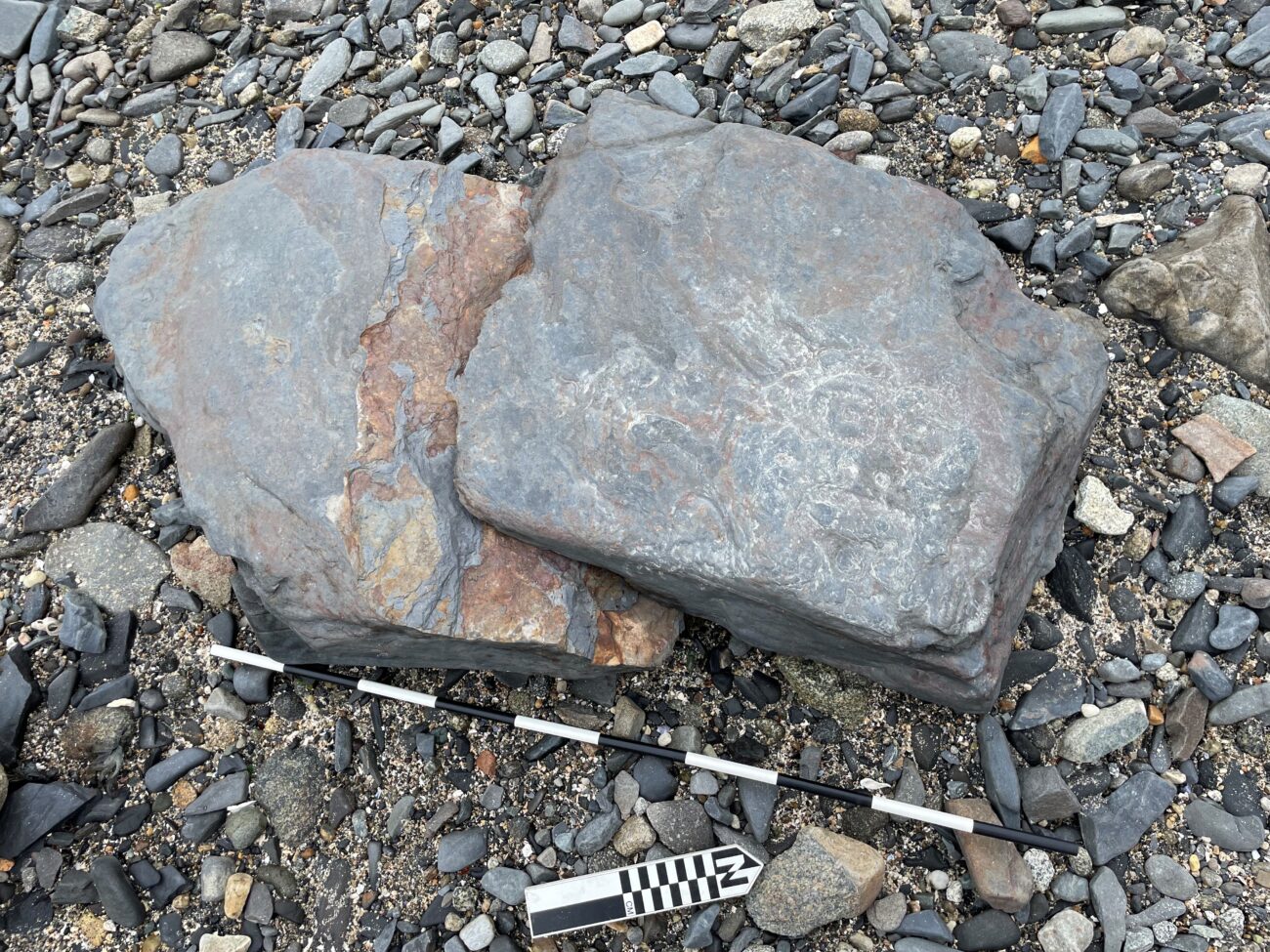
Ancestors of local Tlingit residents carved the petroglyph into a dark gray shale piece. It’s about 3 feet by 2.5 feet. It shows a face, with circular eyes and a lebret marking below the bottom lip. But, somebody last month destroyed the historic rock art that’s likely hundreds to thousands of years old.
A local tour guide found it destroyed last month at Wrangell’s Petroglyph Beach, which is home to dozens of petroglyphs.
“I think it’s sickening to see such a significant artifact and representation of the culture abused like that,” Wrangell Borough Manager Mason Villarma said.
Erica Dirks, archeology technician for the US Forest Service and the local tribal government, Wrangell Cooperative Association, said an unknown person placed a rock under one corner of the petroglyph. They hit it with something like another rock or a sledgehammer, breaking it in half.
Archaeologist stabilized petroglyph – for now
Since the incident, Dirks stabilized the petroglyph, removing the rock from underneath to prevent further fractures.
Her job is to protect and monitor cultural heritage areas in Wrangell. She said it’s difficult to date a petroglyph. They’re not 100% sure of the exact age, but it is hundreds to thousands of years old. Some publications cite an 8,000 year old date, but she said that’s wrong.
Dirks was notified on July 22 from a local tour guide who sent her a photo of it. She said it probably happened on either July 19 or 20 because the guide said the rock was not there before those dates.
“Petroglyph Beach has not been well documented in the past…and we’re not entirely sure why”
She has been working with the local tribe, the City and Borough of Wrangell and the state to document the damage and many other petroglyphs on the beach.
“This is sort of an interesting thing about Petroglyph Beach, and something that we are now going to deal with,” Dirks said. “Petroglyph Beach has not been well documented in the past by archeologists and we’re not entirely sure why this has sort of fallen through the cracks.”
She asks that people leave the petroglyph alone and not try to help repair or move it, because that can damage it even more.
“Don’t do things like touch them because they’re sacred,” Dirks said. “And we ask that you don’t uncover ones that are partially covered, that you don’t stand on any rocks on the beach, because a lot of the time you don’t know what has a petroglyph on it. Maybe it’s too worn to see.”
Dirks said these petroglyphs are important cultural resources not only for the tourism industry, but also for the Tlingit people who are from here.

“They are places that we should respect and objects that we should respect,” she said. “They’re not just objects. They’re sacred. And because of that, I think we need to think about how we impact things.”
She also encourages people not to throw water on the petroglyphs. She said the best way to see them is by taking a photo.
“There’s so many of those that people don’t know that are petroglyphs, they’re half buried,” Dirks said. “Don’t uncover them. And I know that’s something that people have been doing for a really long time, but that also increases impact. Excavating them is also against a state statute that protects them.”
One more suggestion she gives is to avoid having a fire at Petroglyph Beach, since fire is one of the greatest threats to rock art.
Place matters
The plan for the damaged petroglyph is to keep it on the beach. Dirks said one of the things about rock art in general is that the place they’re located matters, because the original creators put them there for a reason.
Borough Manager Villarma said the vandalism is rare. He’s not aware of any vandalism on the beach before.
“I think that we’ll have to analyze ways to monitor the site better, whether it’s cameras or whether that’s increased visits through Parks and Rec or other partners, or just having better monitoring capacity out there,” he said.
Villarma encourages the public to report any knowledge of the vandalism to the local police department.











